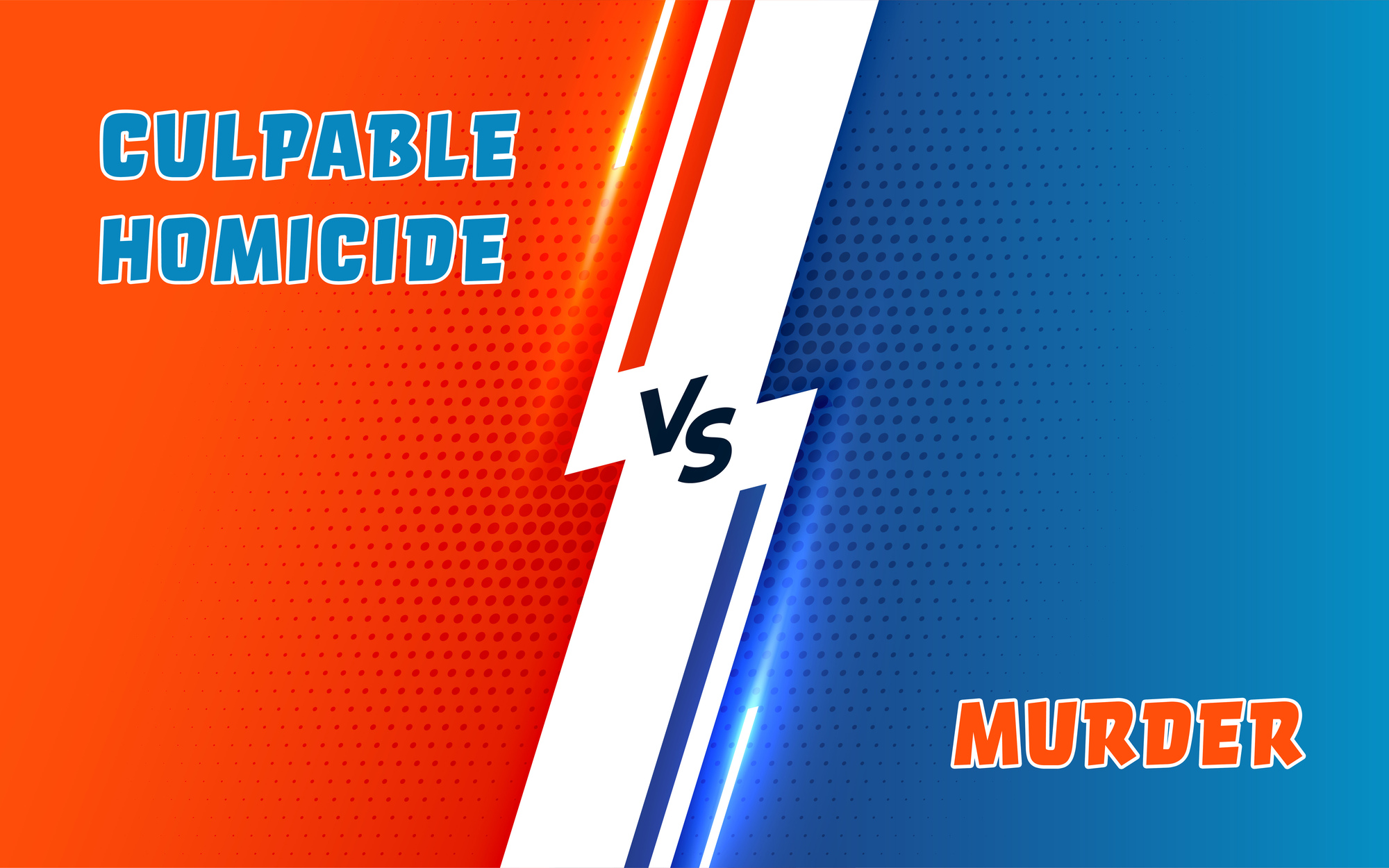Picture this: you’re flipping through the news and stumble upon a headline about a tragic death. A sense of unease washes over you. Then, you notice the word “murder.” A chill runs down your spine. But hold on a minute – isn’t murder just another word for homicide? Many people use these terms interchangeably, but legally, there’s a crucial distinction between murder and homicide. Understanding this difference is not just about satisfying intellectual curiosity; it’s about navigating a complex legal landscape where every word carries weight.

Image: www.infipark.com
This article delves into the intricacies of murder and homicide, unraveling the legal definitions and exploring the nuances that separate these seemingly synonymous terms. We’ll shed light on the historical context, the crucial elements that define each, and how these legal classifications impact real-world investigations and prosecutions. Prepare to embark on a journey to decipher the legal language that surrounds life, death, and the long arm of the law.
Unveiling the Core – What is Homicide?
Homicide, at its core, is simply the killing of one human being by another. It’s a broad term that encompasses a wide range of scenarios, from accidental deaths to intentional acts of violence.
To understand the difference between murder and homicide, we need to separate the act of killing from the intent and circumstances surrounding it.
Think of it as a broad umbrella. There are many different types of homicides, each with specific legal definitions and consequences depending on the circumstances. It’s like a spectrum, with one end being unintentional, accidental death, and the other end being intentional killing with malice aforethought.
Delving Deeper – The Different Types of Homicide
Here’s a breakdown of the different forms of homicide, ranging from accidental to intentional:
-
Justifiable Homicides: These are killings deemed legal and necessary, such as self-defense, defense of others, or legal executions by law enforcement. Imagine a situation where someone is defending themselves from a violent attacker. In this instance, the act of killing the attacker may be considered a justifiable homicide.
-
Excusable Homicides: These are killings that occur due to accident or misfortune, without any criminal intent. Think of a driver accidentally hitting a pedestrian, even though they were not driving recklessly.
-
Criminal Homicides: This is where the killing is unlawful and often has a criminal intent behind it. It’s this category where we often hear the terms “murder” and “manslaughter” being used.
The Heart of the Matter – What is Murder?
Murder represents the most serious form of criminal homicide. It’s characterized by the intentional, premeditated killing of another human being. It’s not simply taking a life; it’s doing so with malice aforethought, with planning and a knowing disregard for the value of human life.
The act of murder carries a significant weight within the justice system, typically resulting in the most severe punishments, including life imprisonment or even the death penalty in some jurisdictions. The distinction between murder and other forms of homicide hinges on the presence of malice aforethought.
Let’s break down the elements of a murder charge:
-
Malice Aforethought: This is the key ingredient that separates murder from other forms of homicide. It implies that the killing was intentional, planned, and carried out with a wicked or depraved heart. The state must prove that the accused had more than just a passing thought of causing harm; they must show that the accused intended to kill and acted on that intention.
-
Premeditation: This element signifies that the accused consciously considered and planned the killing beforehand. For example, if someone buys a gun, researches the best way to use it, and then intentionally goes to a specific location to cause harm, it indicates premeditation.
-
Intent: This element requires proving that the accused intended to kill the victim. It’s not enough to show that the accused caused the death; it must be proven that they acted with the express purpose of ending the victim’s life.

Image: www.clatapult.com
Manslaughter – The Middle Ground
Manslaughter, unlike murder, often involves a lesser level of intent and malice. It generally refers to the unlawful killing of another human being, but with less premeditation and planning. A manslaughter charge often arises in situations where the killing was reckless, impulsive, or unintentional, although it still carries significant legal consequences. In simpler terms:
-
Voluntary Manslaughter: Characterized by a killing committed in the heat of passion, often triggered by a sudden provocation. Think of someone losing control and killing someone in a moment of rage. However, a crucial element here is that the provocation must be “sufficient” to cause a reasonable person to lose control. The accused has to prove they were “provoked” by a particular event or act immediately preceding the killing. This is often used in cases of domestic violence or “crimes of passion” where the accused claims they were driven by strong emotions such as anger or jealousy.
-
Involuntary Manslaughter: Occurs when a death results from the accused’s negligence or reckless behavior, but without intent to kill. This can happen in accidents like drunk driving causing a fatality, or situations where someone takes a dangerous risk that results in death. It’s about proving that the accused knew or should have known their actions could cause harm.
Real Life Examples: Understanding the Application
To see the distinction between murder and homicide in action, let’s explore some real-world examples:
-
Example 1: Accidental Shooting: A hunter accidentally shoots another hunter in the woods. This could be categorized as an excusable killing, or manslaughter, depending on the circumstances. If the hunter was careless with their firearm or violated safety procedures, it would be classified as involuntary manslaughter.
-
Example 2: Self-Defense: A homeowner shoots an intruder who has broken into their house. This is typically classified as justifiable homicide. The homeowner acted to protect themselves or their property from imminent danger, and the law recognizes this as a valid reason to use force.
-
Example 3: Road Rage: A driver intentionally rams another vehicle, leading to a fatality. This scenario could be considered murder, depending on the intent of the driver. If the driver planned the attack and intentionally wanted to harm the other driver, it would likely be considered murder.
Expert Insights: Legal Counsel
To navigate the complex legal landscape surrounding homicide, seeking advice from a qualified legal expert is crucial. A criminal defense attorney understands the subtle nuances of these legal definitions and can help you understand your rights and options. They can guide you through the legal process, ensuring your case is presented effectively and your interests are protected.
What Is The Difference Between Murder And Homicide
Moving Forward: Empowering Knowledge
The distinction between murder and homicide is a complex one, with far-reaching implications. By understanding these legal classifications and their nuances, we gain a deeper appreciation for the delicate balance between life, death, and justice. Take the time to learn, engage in open dialogue, and seek legal counsel when necessary. With knowledge as our guide, we can navigate the complex legal landscape with clarity and conviction.





